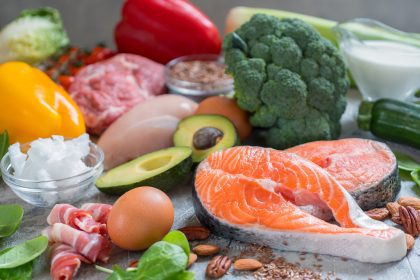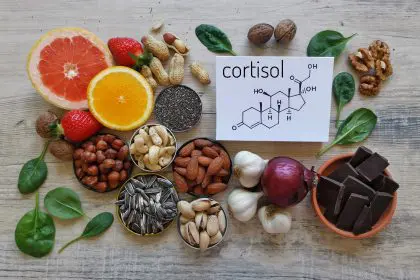Food processing is a key factor in how we consume and experience our meals. The range of food processing can vary from minimal intervention to highly modified products. The way food is processed influences not only its shelf life and taste but also its nutritional value and the health implications it might have.
Processing begins with unprocessed natural foods, such as fresh fruits and vegetables, and can move through stages like minimally processed ingredients, standard processed foods, and finally, ultra-processed products. These stages differ significantly in how they affect our health and nutrition. In the case of bread, it’s essential to understand these differences to make informed decisions about what we consume.
The NOVA system explained
The NOVA system is one of the most widely recognized frameworks for classifying food based on the extent of processing it undergoes. It breaks down foods into four categories: unprocessed or minimally processed foods, processed culinary ingredients, processed foods, and ultra-processed foods. Each category has specific characteristics that help consumers identify the level of modification in the food they’re purchasing.
In ultra-processed foods, ingredients are often not found in a typical home kitchen. They include additives like preservatives, sweeteners, artificial flavorings, and colorings, making the food significantly different from its original form. Understanding this system can help consumers navigate food choices, especially in highly processed categories like bread.
Bread processing spectrum
Not all breads are created equal. Breads, like many other foods, undergo different levels of processing that influence their nutritional value and health impact. At the lowest end of the spectrum, traditional bread made with whole grains, water, yeast, and salt undergoes minimal processing and retains most of its natural nutrients.
On the other end of the spectrum are ultra-processed bread products. These breads may contain extensive ingredient lists that feature additives like emulsifiers, artificial flavorings, and extended preservatives to enhance shelf life. These products may have a longer shelf life, but they lack some of the key nutrients and health benefits of minimally processed alternatives.
Recognizing the processing level of bread requires a careful look at the ingredients and the production methods used. Bread made with only a few basic, natural ingredients is likely a less processed option, while those with many additives and preservatives are more heavily processed.
Identifying ultra-processed bread
Ultra-processed bread products often include ingredients that go far beyond flour, yeast, and salt. These breads usually contain long lists of ingredients, many of which may be difficult to pronounce or unfamiliar. Some of these additives serve to preserve the bread, extend its shelf life, or enhance texture and flavor.
Key indicators of ultra-processed bread include unfamiliar chemicals like high-fructose corn syrup, potassium bromate, and artificial colorings or flavorings. While these ingredients may make the bread more convenient and longer-lasting, they often come at the cost of nutritional value and may pose health risks when consumed in excess.
Understanding these indicators can help you avoid overly processed bread products in favor of options that are simpler, more natural, and potentially better for your health.
Making healthier choices
When choosing bread, making healthier decisions can significantly improve your diet. To start, it’s essential to prioritize whole grain bread over refined white bread. Whole grains retain more of the original nutrients found in the grain, including fiber, vitamins, and minerals. Fiber is particularly important for maintaining digestive health and regulating blood sugar levels.
You should also pay close attention to ingredient lists when shopping for bread. Choose bread with simple, natural ingredients, such as whole grains, water, yeast, and salt. Avoid bread with a long list of additives or preservatives, as these may indicate higher levels of processing.
If you’re unsure about a bread’s level of processing, always consider the storage needs and expiration date. Fresh bread with minimal preservatives tends to spoil faster, while ultra-processed options often have a longer shelf life due to the addition of chemical preservatives.
Whole grain benefits
Opting for whole grain bread offers a range of health benefits. Whole grains are rich in fiber, which promotes better digestion, helps manage cholesterol, and can contribute to weight management. Additionally, whole grain bread is less likely to cause spikes in blood sugar levels, making it a better choice for individuals managing conditions like diabetes.
The nutritional content of whole grain bread is generally more robust than that of ultra-processed alternatives, which tend to lose valuable nutrients during the manufacturing process. When choosing bread, look for labels that specify whole grains as the primary ingredient for a healthier option.
Balanced approach
While ultra-processed bread should not be the primary focus of a healthy diet, it’s essential to recognize that completely avoiding processed foods may not be realistic for everyone. Moderation is key when it comes to incorporating processed foods into your diet. Instead of cutting out processed foods entirely, focus on balancing them with healthier, more nutrient-dense options.
For example, choosing whole grain bread when possible can provide more fiber and essential nutrients, while limiting your intake of ultra-processed bread can help reduce your exposure to potentially harmful additives and preservatives. By being mindful of your choices, you can still enjoy bread in a way that aligns with your health goals.
Future of bread
As consumer awareness of food processing grows, the bread industry is likely to adapt. Expect more innovative options on the market, including breads made with alternative grains and less processed ingredients. These developments aim to meet the increasing demand for healthier, minimally processed foods.
Ultimately, understanding the impact of bread processing on your health empowers you to make informed decisions. With a balanced approach to food choices, including awareness of bread’s processing level, you can enhance your overall well-being while still enjoying the foods you love.











